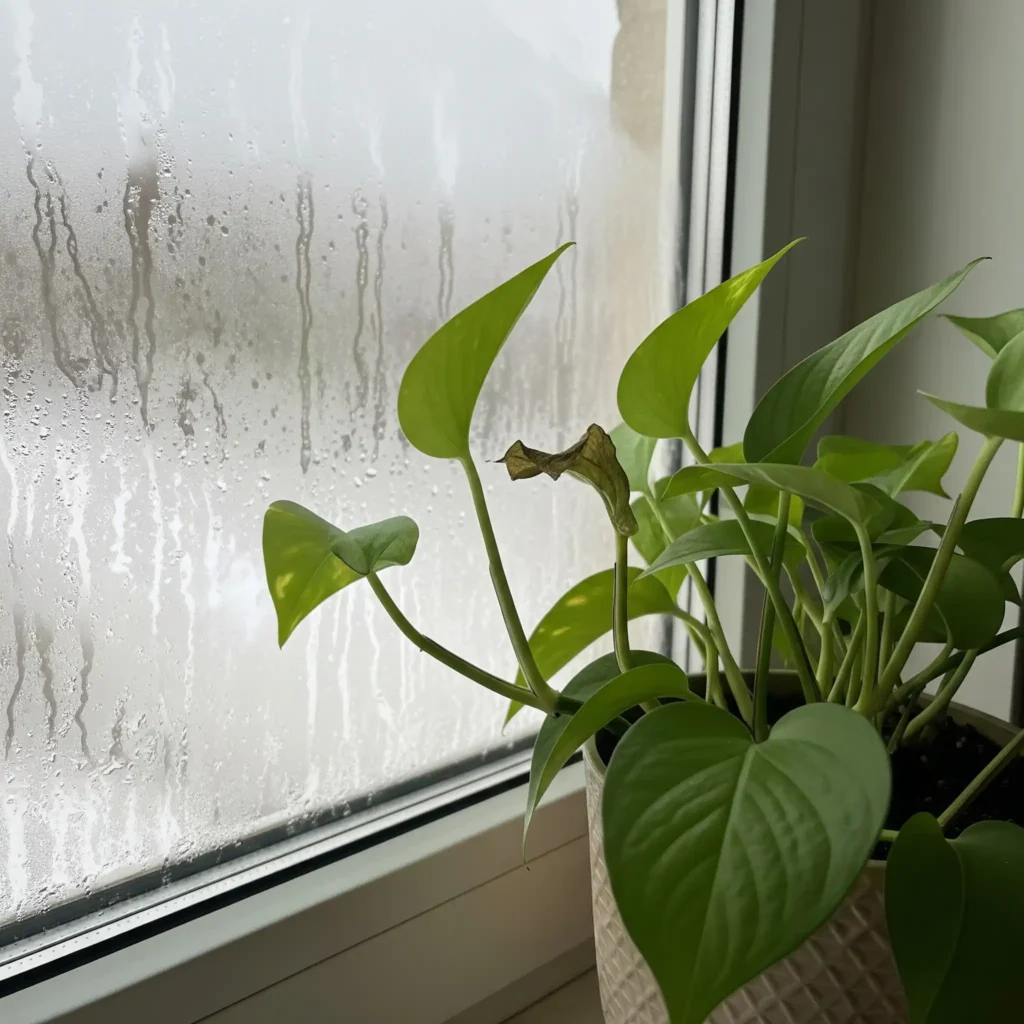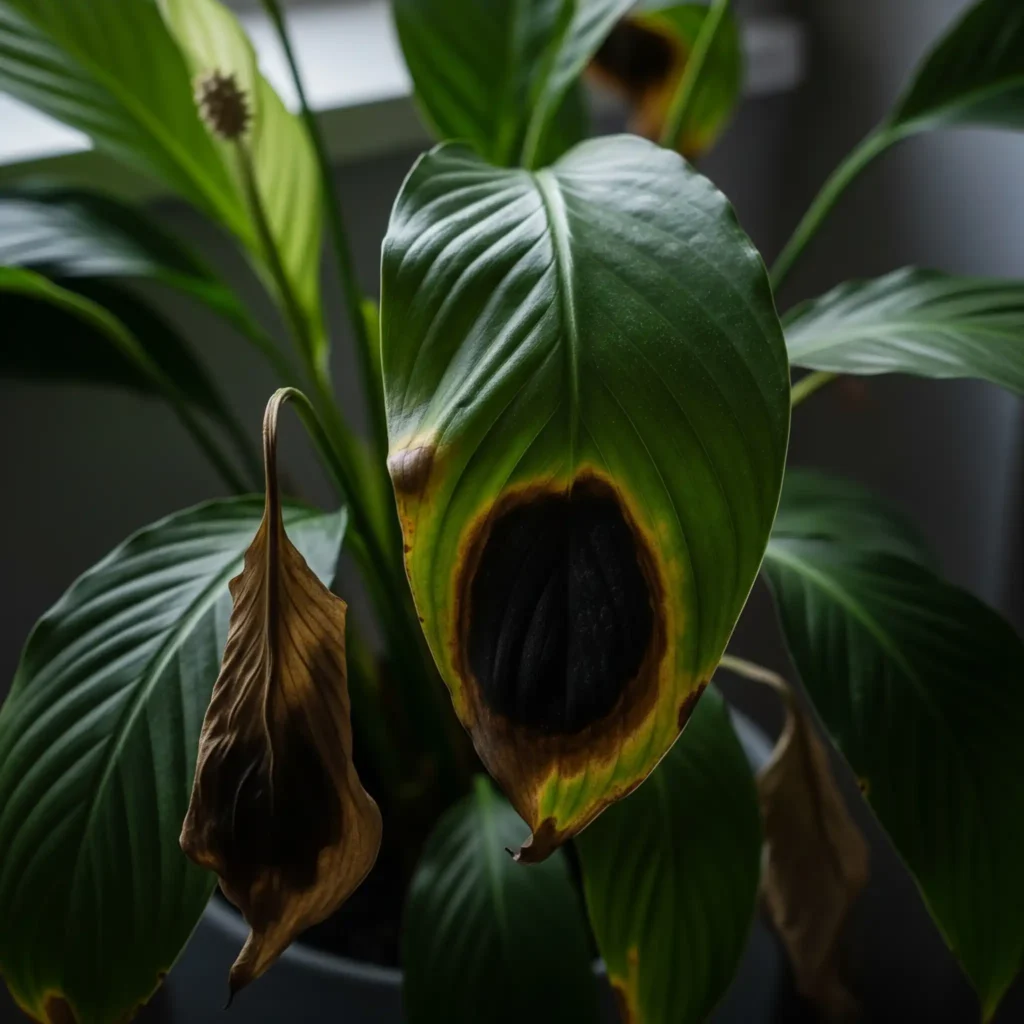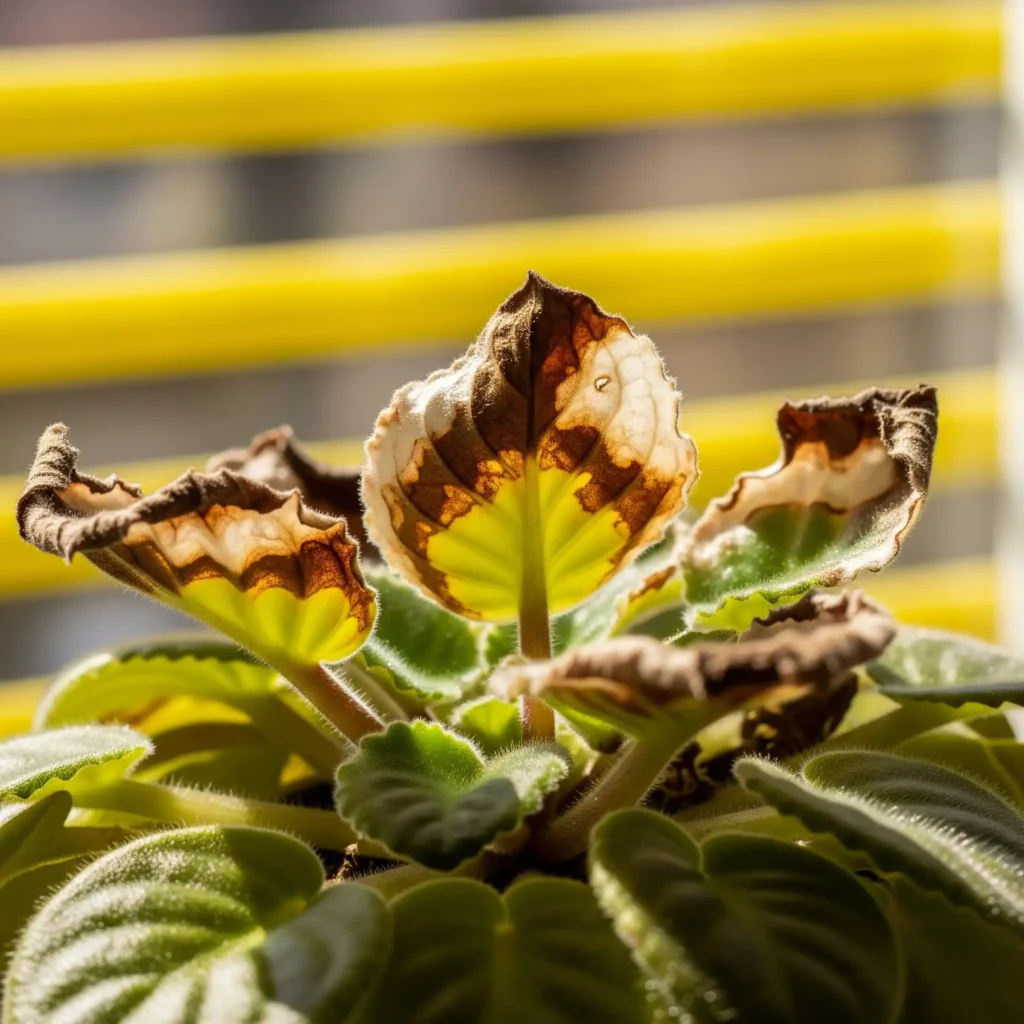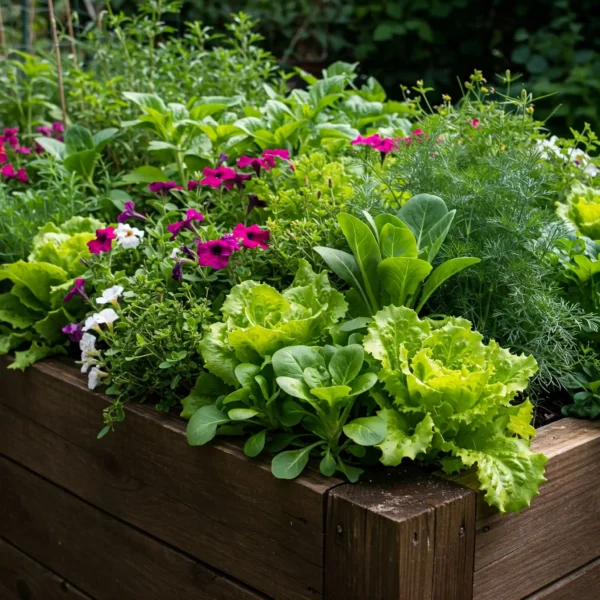Is your house a hot house or an ice palace? Finding the Right Temperature for Houseplants to Grow Well
Hey there, other plant lover! You know just when to water your plants and the light in your home seems perfect for them, but are they still not looking their best? The temperature of the room they’re in could be the problem, and it’s not always easy to figure out what it is. It’s true that plants have their own “comfort zones,” just as we do, and locating that sweet spot can make a big difference.
What are the best temperature ranges for common houseplants, and why is this so important for their health? The good news is that most common houseplants do well in temperatures that are pleasant for us, which is usually between 18°C and 24°C (65°F and 75°F). But to keep them from getting stressed and to encourage lush, colorful growth, it’s very important to know what they like, especially when it comes to different kinds of plants, and to keep them safe from severe extremes. Temperature doesn’t simply make you feel warm or cool; it also impacts a plant’s metabolism, how rapidly it develops, and how happy and healthy it is overall.
This article will explain why temperature is so important for the plants we keep inside. We’ll look at what the best ranges are for different kinds of common plants, as a cactus and a fern have different notions about what makes them comfortable. We’ll also learn how to identify if your plant is stressed by the temperature (is it shivering or sweating?) and, most importantly, I’ll give you a lot of useful advice on how to keep your home at a temperature that is good for plants. Are you ready to quit guessing and start making a great place for your green buddies to live? Let’s look at ways to keep them warm and healthy all year long!
How Temperature Affects Your Houseplants: The “Why” Behind the Warmth (or Coolness)
Let’s talk about why temperature is so important for your plants before we go into the details of exact degrees. It’s not just about how they “feel”; it’s in their biology!
The Engine Room: Growth and Metabolism
The temperature has a direct effect on how a plant’s metabolism works. You might say it’s like the speed control for their engine. Photosynthesis is the amazing mechanism by which they turn light into food, and respiration is the process by which they use that food to make energy for growth and repair. These mechanisms work well when the temperature is just right, which helps plants develop healthily. The engine can splutter or stall if it’s too hot or too cold!
The Little Workers: Enzyme Activity
There are millions of enzymes, which are tiny protein workers, in every plant cell. These enzymes are responsible for all the important biochemical reactions. The temperature has a big effect on how active these enzymes are. They slow down when it’s too cold and can even break or stop working completely when it’s too hot.
Water uptake and transpiration: the hydration highway
Extreme temperatures can make it very hard for a plant to get water from the earth through its roots. It can also change the rate at which it releases water vapor from its leaves, which is called transpiration. If it gets too hot, they can lose water too quickly, which would make them wilt. If it becomes too cold, the roots may not work as well.
Nature’s Signs of Flowering and Dormancy:
For some plants, certain temperature variations might be very essential signals from the environment. Some plants, like many orchids or Christmas cacti, might bloom after a specific amount of cooling. Others, especially in the winter, might go into a necessary time of dormancy or rest.
My short story: On a particularly cold day, you probably don’t want to do anything and feel a little lethargic, right? You might just want to get under a blanket. A lot of plants are alike! Their internal “machinery” doesn’t work as well when it’s too cold or too hot for them, so they can’t accomplish all of their awesome planty tasks as well as they could.
As plant parents, it’s important for us to understand how this affects them. Now, let’s get down to business. What are the “just right” temperatures for some of our favorite pets that live inside?
How to Figure Out Your Plant’s Ideal Temperature?
Okay, let’s speak about the numbers. Even though every plant is different, we can nevertheless establish some reasonable assumptions to help us. The most important thing is to keep the atmosphere steady and stay away from those sudden changes in temperature.
The “Sweet Spot” for Most Houseplants from Tropical and Subtropical Areas
The good news is that most of the popular houseplants we bring into our homes are perfectly OK at the same temperatures we are. For a lot of different plants, including Pothos, Philodendrons, Spider Plants, Dracaena, and many more, that 18°C to 24°C (65°F to 75°F) range is a great place to start. In this range, being consistent is sometimes more crucial than getting one particular magic number. The most important thing is to keep them safe from unexpected, very cold or very hot weather.
Different plant groups have different temperature needs and tolerances.
Let’s split it down even more into some common groups. A brief, easy-to-read table might help you remember things quickly, but here are the details:
- Tropical Foliage Plants (such Monstera, Fiddle Leaf Fig, Calathea, Alocasia, and Ferns):
- These lovely creatures usually like the warmer end of the normal range, maybe more often between 20 and 25 degrees Celsius (68 and 77 degrees Fahrenheit).
- They really don’t appreciate chilly drafts or rapid decreases in temperature. Calatheas and Marantas (also known as prayer plants) can be quite sensitive. If they get too cold, their leaves may curl or become crispy to signify that they are unhappy. Ferns also like it when the temperature and humidity stay the same.

- Flowering houseplants include African violets, orchids, peace lilies, and anthuriums.
- African violets do best in temperatures that stay the same and are moderate, like the ones we like (about 20–23°C or 68–73°F). Cold water on their leaves and cold drafts make them very unhappy.
- Orchids, notably Phalaenopsis, the moth orchid, like consistent warmth, which is usually between 18 and 29 degrees Celsius (65 and 85 degrees Fahrenheit) during the day. A small reduction in temperature at night of roughly 5–10°F (3–5°C) for a few weeks can often make them bloom again!
- Peace Lilies (Spathiphyllum) like temperatures between 18 and 25 degrees Celsius (65 and 78 degrees Fahrenheit). They don’t like the cold very much, and if they get too cold, they will droop a lot.
- Anthuriums prefer it warm, between 20 and 30 degrees Celsius (70 and 86 degrees Fahrenheit), and they really don’t like it when it’s below 15 degrees Celsius (60 degrees Fahrenheit).
- Succulents and cacti, like jade plants, aloe vera, echeveria, and haworthia,
- These hardy biscuits can usually handle a broader range of temperatures than most tropicals. They are fine with typical room temperatures during the spring and summer, when they thrive.
- A winter rest period with temperatures that are a little cooler (maybe 10–15°C or 50–60°F) can actually help many succulents and cacti. This can occasionally make them bloom in the spring.
- They can survive warmer temperatures provided the light is adequate, but they often dislike cold, damp environments, which can lead to decay.
- Plants that can handle cooler temperatures and bounce back after damage (like some palms, snake plants, and ZZ plants):
- Plants like Snake Plants (Sansevieria) and ZZ Plants (Zamioculcas zamiifolia) are known for being tough and able to handle slightly cooler settings or little changes in temperature better than very tropical plants. This group also includes some indoor palms. But “tolerant” doesn’t mean they like the cold; it just means they deal with it better.
A Note About How Cold It Gets at Night:
A lot of plants in their natural settings automatically get a little cooler when the sun goes down, much like orchids do. It’s common and frequently good for most of our houseplants to have their nightly temperature decrease by 5 to 10 degrees Fahrenheit (3 to 5 degrees Celsius) from their daytime temperature. For some people, it can assist control their metabolism and act as a signal for specific growth processes. Most homes cool down a little bit at night on their own, so you don’t generally have to do anything special to make this happen.
It’s great that you know these general preferences! But how do you know whether your plant is really too hot or too cold, even if your thermostat suggests it should be fine? Your plants will often show you that they are in trouble in very apparent ways…
“Too Hot to Handle” or “Feeling the Chill?”: How to Tell if Your Plants Are Stressed from the Heat
Plants can’t talk, but if we learn how to understand their signs, they can tell us a lot! Too much heat or too much cold can cause temperature stress in a number of ways.
Here are some signs that your plant is too cold:
Brrr! If your plant is too cold, it could show these signs:
- Drooping or wilting leaves: This can be one of the earliest indicators. If the problem is cold, the plant could suddenly look limp or sad, and watering it won’t usually help.
- Leaves can change color in a bad way, turning dark, almost black, or they can become pale, yellowish, or even see-through spots. This is typically a sign that the cells have been hurt by the cold.
- Leaf Drop: A quick loss of leaves, especially older ones, can be a strong response to a cold shock or being in cold weather for a long time.
- Stunted Growth: If your plant is always too chilly, it will grow much more slowly or possibly cease growing entirely. It looks like it’s attempting to save energy by huddling up.
- Mushy Spots: If the plant tissue freezes, it might become mushy and drenched with water when it thaws. Most of the time, this damage can’t be fixed.

How to Tell if Your Plant is Too HOT:
On the other hand, if your plant is too hot, it could show you by:
- Wilting: Extreme heat can make plants wilt, just like cold does, even if the soil is wet. This happens because the plant may be losing water through transpiration quicker than its roots can take it in, or because the high temperatures are making the roots work less well.
- Leaf Scorch or Sunburn: The edges or tips of the leaves may be brown and crispy, or there may be regions that look bleached, pale, or burnt, especially on leaves that get a lot of direct sun through heated glass.
- Rapid Soil Drying: If you have to water your plant a lot more often than normal, it could be because the soil is losing too much water and the leaves are losing too much water because of the high temperatures.
- Yellowing and Dropping Leaves: When a plant is under a lot of heat stress for a long time, the leaves might become yellow and fall off.

- Flower Bud Drop: If your plant is trying to bloom, severe heat can make the fragile buds dry out and fall off before they have a chance to open.
My helpful advice to writers: Don’t freak out if you observe some of these signs! When you look for further information online, use precise, descriptive words. You might even capture a picture to compare with instances. This tutorial talks about the most prevalent signs, but sometimes it’s good to see them side by side.
Do you see some of these indicators, or do you just want to be proactive and make sure your plants have a secure and comfortable place to grow from the start? Let’s talk about some useful strategies to keep the temperature around your plants under control.
How to Keep Your Houseplants Comfortable in a Climate-Controlled Oasis
The good news is that you usually don’t need any special tools to keep the temperature right for your houseplants. It’s often about paying attention, making sensible choices about where to put things, and being aware of how the seasons change.
Location, Location, Location! – The Rule of Gold:
- Avoid drafts like the plague! This is a major one! Cold drafts from leaky windows, doors that are often opened (particularly in the winter), and air conditioning vents in the summer can all hurt your plants. Most plants don’t like it when the temperature changes quickly like this.
- Avoid Direct Heat Sources: Direct, intense heat is just as hazardous as drafts. Don’t put your plants right near to or above radiators, fireplaces, heating vents, or other appliances that give off heat, such ovens or even some devices. This can burn their leaves and dry them out very rapidly.
Window Wisdom: A Balancing Act
Windows can be hard to work with! In the Northern Hemisphere, south-facing windows may grow very hot in the summer, and the strong heat that comes through the glass can burn delicate plants. You could use sheer curtains to spread out the light or move the plants back a foot or two from the glass during the warmest portion of the day.
In the winter, on the other hand, windows can get exceedingly frigid. Make sure the leaves of your plant don’t touch the cold glass, as this can hurt the plant. A little room makes a great impact.
Seasonal Adjustments—Getting in the Mood for the Season:
- Take extra care of those frigid windowsills this winter. If you live in a place that gets really cold, you might want to move delicate plants a little further into the room during the winter months or put anything between the pot and a really cold window, like a piece of cardboard or styrofoam.
- Summer Care: Keep plants out of the strong noon light, especially if they are near windows. If rooms tend to grow particularly hot and stuffy, make sure they have excellent airflow. This can also help keep the temperature stable.
Using Thermometers—Know Your Numbers:
- Instead of just looking at the thermostat in your home (which might be in a different section of the house), you can get a much better picture of the real temperature around your plants by putting a basic room thermometer near them.
Putting plants together (a small છતાં helpful effect):
- Grouping plants together is mostly a way to raise the humidity, but it can also make the microclimate a little more stable in terms of temperature, which protects them from small changes in the temperature of the room as a whole.
Getting used to things is important—no shocks!
- When you move plants to a place with a very different temperature, like when you bring plants that have been outside all summer back inside for the winter or the other way around in the spring, do it slowly. Gradually exposing them to the new conditions over the course of a week or two will help them get used to them. Plants get stressed out when things change suddenly and a lot.
For Very Bad Cases (Not as Common for Most Houseplants):
- Some skilled hobbyists might utilize small indoor greenhouse cabinets or grow tents to cultivate plants that need very specific temperatures (such rare tropicals or plants that are being reproduced). These are places where temperature and humidity can be more carefully controlled. But most houseplants don’t need this much help most of the time.
A lot of the time, managing temperature is just about being aware and making these modest, careful changes. But what do we do when things go wrong even though we try our best and a plant becomes too hot or too cold?
If your plant becomes too cold or too hot, here’s what to do.
Even the best plant parent can have a temperature problem from time to time, like a sudden cold snap or forgetting to move a plant too close to a heater. Don’t worry; it happens! Here are some tips for first aid:
If your plant becomes cold:
- Move it right away to a warmer place with no drafts.
- Gently warm it up: Don’t put it right close to a high heat source, such a radiator or directly in front of a heater, to try to “warm it up quickly.” This could make the shock and damage even worse. It is much preferable to warm up slowly.
- Don’t water too much (if at all): If the soil is already wet, don’t water it. Roots that have been damaged by cold weather may not be able to take in water properly, and soil that is cold and wet is a good place for root rot to grow.
- Be patient; it can take time for things to get better after being damaged by the cold. Some leaves may be irreversibly hurt and won’t get better. When you can see which leaves aren’t going to come back (they can get brown or mushy), you can cut them off using clean scissors so the plant can focus on growing new ones.
If your plant gets too hot:
- Cool it Down Quickly (But Gently): As soon as possible, move it to a cooler, shadier place where it won’t get direct sunlight or heat.
- Water it well if the soil is very dry.
- Think about a gentle mist: You might try lightly spraying the leaves with cool water that isn’t too cold. Evaporation can help chill the plant down a little bit.
- Be patient again. Once the plant has settled down and it’s evident that the leaves won’t come back, cut off any that are badly burned or dried out.
Above all, focus on prevention:
These strategies for recovering can help, but it’s always better to avoid being exposed to severe temperatures in the first place. The easiest way to protect your plant is to pay attention to where it is and how the seasons change.
You are now ready for those times when the temperature goes wrong, thanks to these recovery tips. Let’s end our trip into the world of making the right temperatures for your indoor garden!
The simple secret to keeping your plants happy all year long is to keep them warm.
We’ve spoken about why and how temperature affects our houseplants, and I hope you feel more sure about how to make their environment comfortable. It’s apparent that keeping the right temperatures steady is very important for their health, growth, and pleasure in general.
If you want to know and keep the Ideal Temperature Ranges for Common Houseplants, you don’t have to check your home’s thermostat every five minutes. Not at all! It’s more important to know what each of your plants needs, keep them safe from severe temperatures, and carefully choose where to put them in your home so that they may thrive in a consistently comfortable climate.
This careful attention to temperature, along with sufficient lighting and watering, makes for the best care for houseplants. One of the easiest ways to get that lush, colorful indoor jungle we all want is to do this.
You are really giving your green friends a long, healthy, and beautiful life in your home by keeping them warm and comfortable at the right temperature. They’ll give you greater growth, better color, and that great feeling of satisfaction that comes from watching something you care for do well. Happy growth!
What is the hardest thing about keeping your houseplants at the right temperature? Or do you have a tried-and-true way to keep them comfortable all year long? Please leave a comment below with your thoughts or any queries you might still have.
FAQ: Answers to Your Quick Temperature Questions
Here are some questions that come up a lot when we talk about how to keep our houseplants at the appropriate temperature:
Is it okay if the temperature in my room changes a little during the day?
Yes, most houseplants can handle small changes in temperature during the day. In fact, these changes can even resemble the weather outside. Plants tend to have issues and get stressed out when the temperature changes suddenly or when they are exposed to high heat or cold for a long time.
Do all of my houseplants need to be at the same temperature?
A lot of typical houseplants like the same temperature range (the cozy 18–24°C or 65–75°F zone), but some have very varied tolerances. Succulents, for instance, can frequently endure lower temperatures better than very tropical ferns or calatheas. It’s usually a good idea to learn about the needs of your plants and, if you can, put those with similar needs together.
In the winter, the windowsill gets incredibly cold. What do I do with my plants?
This happens a lot! You could move your plants back a few inches from the cold glass, put a piece of cardboard or styrofoam between the pot and the windowpane to keep them warm, or, if it’s really cold, you might need to move them to a slightly warmer spot away from the window for the coldest months of winter.
Can I put a heat mat under my houseplants?
People usually utilize heat mats for certain things, such beginning seeds or keeping very tropical plants alive by keeping their roots warm (typically in terrariums). A heat mat isn’t necessary for most common adult houseplants grown in normal household settings. In fact, if you don’t use one carefully and with a thermostat, it could even make the roots too hot.
How essential is the temperature at night for plants? Is it okay if it cools down at night?
A small drop in temperature at night (maybe 5–10°F or 3–5°C) is normal for many plants and can even be good for them. It typically looks like where they live. Some plants, including many Phalaenopsis orchids, need this drop in temperature at night to help them bloom. So, sure, it’s usually fine, and frequently desirable, if your home gets a little cooler at night.









